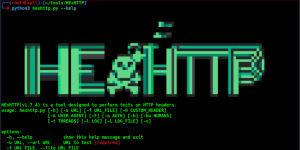Recon Tool: SecretScanner

Reading Time: 2 Minutes
SecretScanner
Deepfence SecretScanner can find unprotected secrets in container images or file systems.
- SecretScanner is a standalone tool that retrieves and searches container and host filesystems, matching the contents against a database of approximately 140 secret types.
- SecretScanner is also included in ThreatMapper, an open source scanner that identifies vulnerable dependencies and unprotected secrets in cloud native applications, and ranks these vulnerabilities based on their risk-of-exploit (example)
See Also: So you want to be a hacker?
Complete Offensive Security and Ethical Hacking Course
What are Secrets?
Secrets are any kind of sensitive or private data which gives authorized users permission to access critical IT infrastructure (such as accounts, devices, networks, and cloud-based services), applications, storage, databases, and other kinds of critical data for an organization. For example, passwords, AWS access IDs, AWS secret access keys, Google OAuth Key, etc. are secrets. However, sometimes attackers can easily access secrets due to flawed security policies or inadvertent mistakes by developers. Sometimes
developers use default secrets or leave hard-coded secrets such as passwords, API keys, encryption keys, SSH keys, tokens, etc. in container images, especially during rapid development and deployment cycles in CI/CD pipeline. Also, sometimes users store passwords in plain text. Leakage of secrets to unauthorized entities can put your organization and infrastructure at a serious security risk.
SecretScanner by Deepfence helps users scan their container images or local directories on hosts and outputs a JSON file with details of all the secrets found.
Check out their blog for more details.
When to use SecretScanner
Use SecretScanner if you need a lightweight, efficient method to scan container images and filesystems for possible secrets (keys, tokens, passwords). You can then review these possible ‘secrets’ to determine if any of them should be removed from production deployments.
Trending: Offensive Security Tool: Mangle
Trending: Offensive Security Tool: WinPwnage
Quick Start
For full instructions, refer to the SecretScanner Documentation.
Install docker and run SecretScanner on a container image using the following instructions:
- Build SecretScanner:
./bootstrap.sh
docker build --rm=true --tag=deepfenceio/deepfence_secret_scanner:latest -f Dockerfile .
- Or, pull the latest build from docker hub by doing:
docker pull deepfenceio/deepfence_secret_scanner:latest
- Pull a container image for scanning:
docker pull node:8.11
- Scan the container image:
docker run -it --rm --name=deepfence-secretscanner -v $(pwd):/home/deepfence/output -v /var/run/docker.sock:/var/run/docker.sock deepfenceio/deepfence_secret_scanner:latest -image-name node:8.11
Disclaimer
This tool is not meant to be used for hacking. Use it only for legitimate purposes like detecting secrets on the infrastructure you own, not on others’ infrastructure. DEEPFENCE shall not be liable for loss of profit, loss of business, other financial loss, or any other loss or damage which may be caused, directly or indirectly, by the inadequacy of SecretScanner for any purpose or use thereof or by any defect or deficiency therein.
Clone the repo from here: GitHub Link









